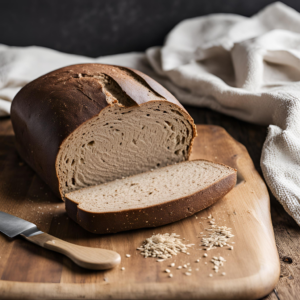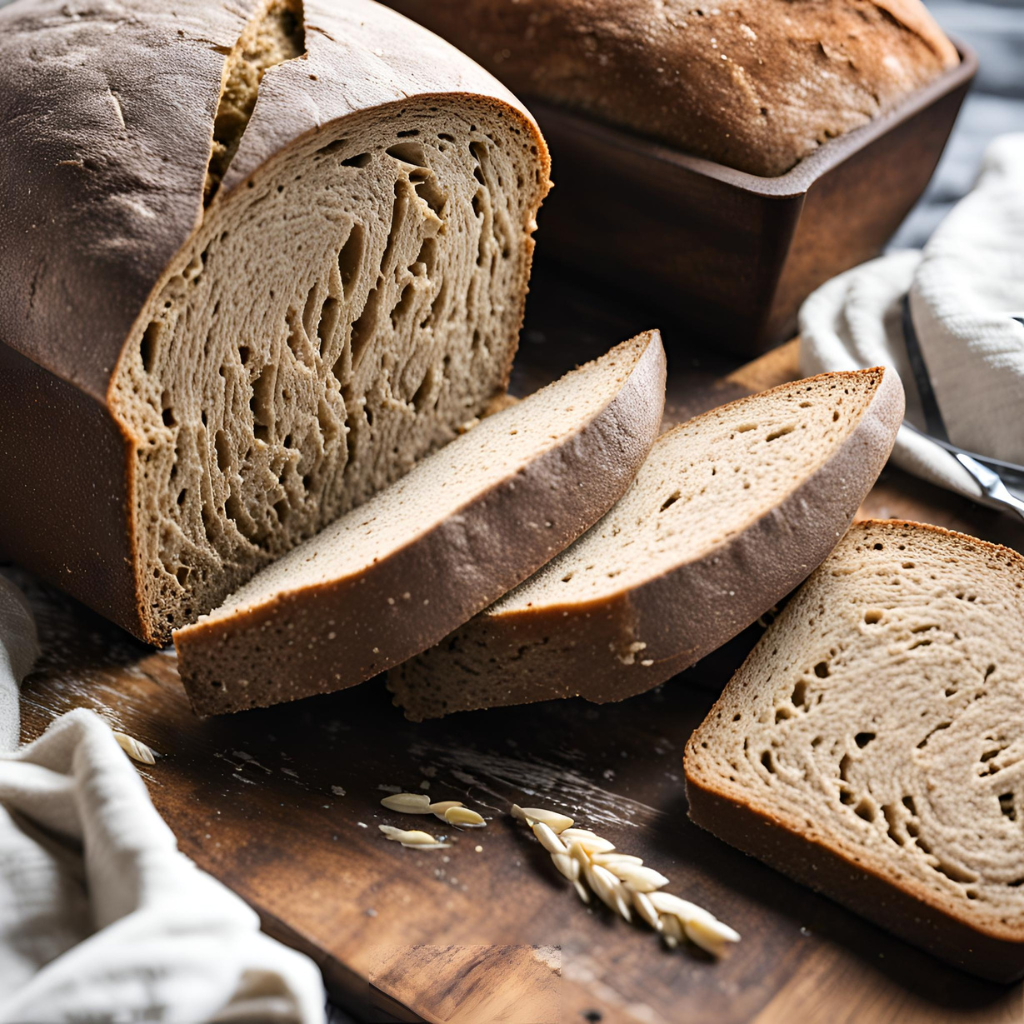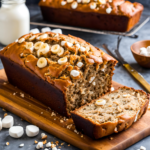Sourdough rye bread is an easy and tasty loaf that the whole family will enjoy. This bread combines the earthy flavor of rye flour with the tangy taste of sourdough, creating a comforting and hearty loaf.
Unlike traditional recipes that use commercial yeast, this version relies on a sourdough starter for a homemade feel. It’s simple to prepare and bake into a delicious, crusty loaf that’s perfect for sandwiches, toast, or enjoying on its own.
Serve it with a spread of butter, a drizzle of honey, or alongside your favorite soups and stews for a complete meal that’s sure to satisfy. This sourdough rye bread is a convenient and flavorful way to enjoy the rich taste of homemade bread without spending hours in the kitchen.

Sourdough Rye Bread Recipe
Equipment
- Bench scraper
- Mixing bowls
- Bread lame
- 2 Loaf pans
Ingredients
- Oil for greasing pan
- 2/3 cup Active starter
- 2 tsp Table salt
- 1 1/3 cup Warm water
- Flour for dusting work-surface
- 1 1/2 tbsp Olive oil
- 3 2/3 cups Bread flour
Instructions
- In a large mixing bowl, combine sourdough starter, water, and olive oil, and stir until combined.
- Add bread flour and sprinkle salt over the top.
- Stir together with your hands or a wooden spoon until the dough is mostly combined and no dry patches of flour remain.
- Cover the bowl with plastic wrap and let sit undisturbed for one hour.
Stretch & Fold
- Form the dough into a ball.
- With wet hands, stretch the top of the dough over the bottom, turning 90 degrees and repeating three more times.
- Cover and let rest for 30 minutes. Repeat this stretch and fold every 30 minutes as the dough rises.
- Allow the dough to rise.
Forming the Dough
- Lightly grease a 9×5 loaf pan.
- Turn the risen dough onto a lightly floured surface.
- Gently deflate and shape it into a rectangle.
- Fold the right side into the center, then tightly roll the dough from a short end.
- Tuck the ends under and place it in the greased pan.
- Cover with plastic wrap and refrigerate overnight or for 12-24 hours.
Baking
- Remove the sourdough from the refrigerator and preheat the oven to 450°F.
- Let the dough rest for 30-35 minutes.
- Uncover the bread, score it down the center, and cover with another 9×5 pan or a tented aluminum foil.
- Bake on the center rack for 30 minutes, then remove the cover and bake for another 20-23 minutes, until golden brown and the center reaches 206-208°F.
- Cool in the pan for 15 minutes, then turn out onto a cooling rack.
Notes
- Store in an airtight container at room temperature for up to a week. To freeze, wrap the whole loaf tightly in plastic wrap, then foil.
- Defrost at room temperature before unwrapping. For pre-sliced freezing, place slices in a Ziploc bag, removing as much air as possible.
- For longer storage, individually wrap each slice in plastic wrap before placing in the bag.
Nutrition Facts:
| Nutrition | Value |
|---|---|
| Calories | 1820 kcal |
| Carbohydrates | 364 g |
| Protein | 59 g |
| Vitamin A | 9 IU |
| Iron | 4 mg |
| Sugar | 1 g |
| Calcium | 81 mg |
Which One Is Better: Sourdough Bread Or Regular Bread?

Sourdough bread is a healthier alternative to regular white or whole-wheat bread. While it has similar nutrient content, its lower phytate levels make it more digestible and nutritious.
Is It Okay For The Diabetics To Eat Sourdough Bread?
The slow fermentation process of sourdough bread may cause it to raise blood sugar more gradually than other breads. Therefore, sourdough bread could be a good choice for those with diabetes.
Is Sourdough The Healthiest Bread?
Sourdough has a lower glycemic index. Its fermentation process reduces harmful starches, making it healthier compared to many other types of bread.





